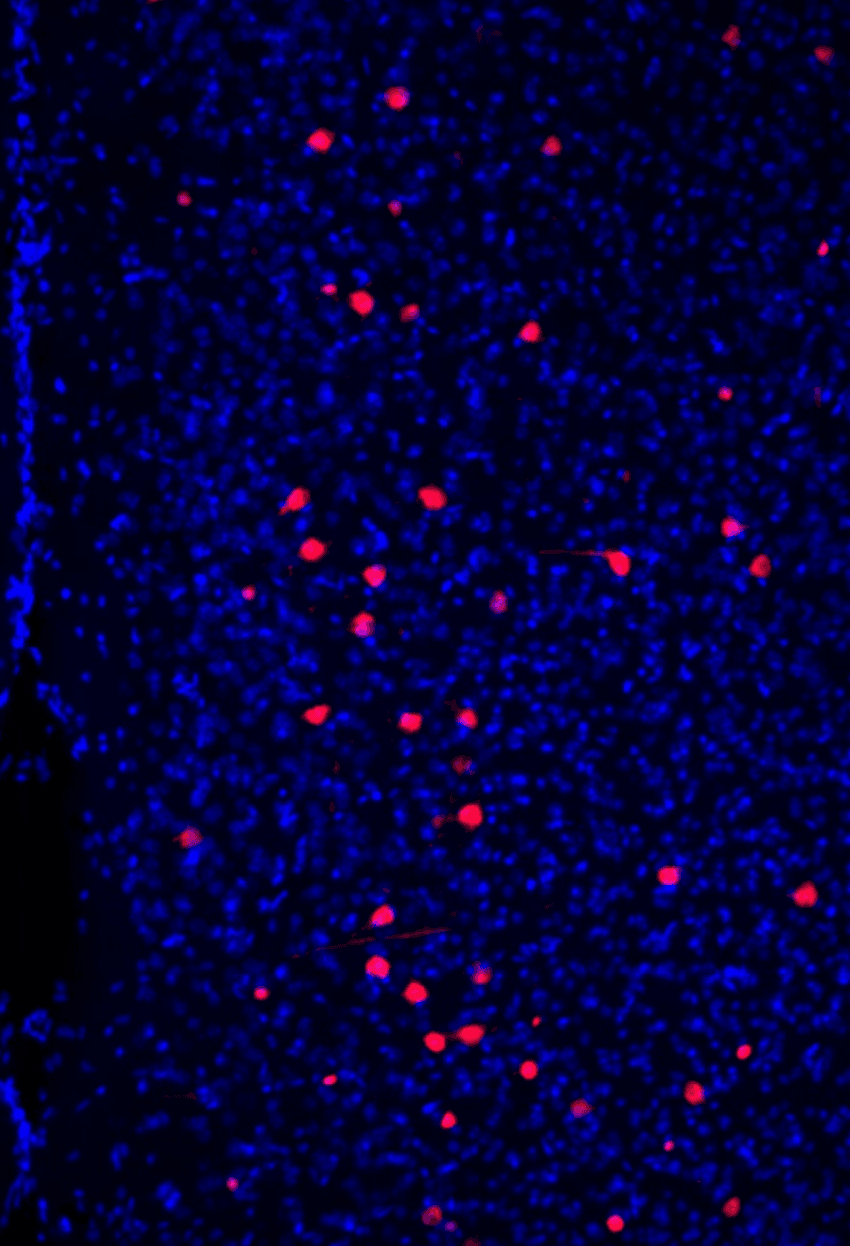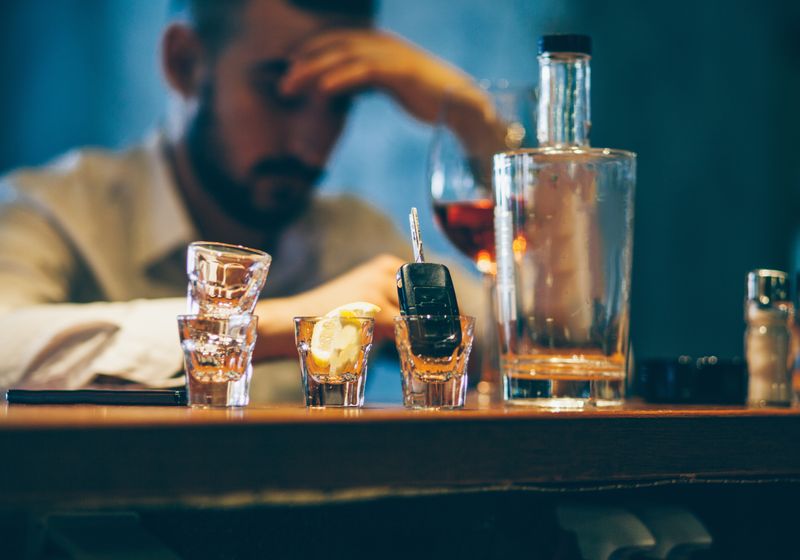Specific sets of neurons within particular brain regions get activated in response to binge drinking, offering potential targets to develop treatments for compulsive alcohol consumption.
Whether it is a Friday-night drink with friends, a quiet glass of wine to unwind after a long day, or as a wedding toast, alcohol has woven itself into celebration, comfort, and routine. This seemingly innocent habit can give way to binge drinking, which can lead to addiction.
Gilles Martin studies the neuronal circuits underlying binge alcohol drinking using mice models and techniques such as electrophysiology, optogenetics, and transcriptomics.
Gilles Martin
“The drugs that we have available today to really help people quit drinking, there are actually very few of them, and their efficacy is really modest,” said Gilles Martin, a neurobiologist and electrophysiologist at the University of Massachusetts Chan Medical School. They also result in significant adverse side effects, he noted.
While scientists understand the brain regions underlying binge drinking alcohol, the specific neuronal circuits involved remained elusive. To bridge this gap, Martin and his team use experimental mouse models and techniques such as patch clamp electrophysiology to measure neuronal activation and optogenetics to activate specific neural circuits. By leveraging these, the scientists uncovered neuronal ensembles—populations of cells that display coordinated activity—recruited in response to binge drinking. In addition to revealing clues to develop interventions against excessive alcohol consumption, their work provides crucial information about neuronal wiring within the mammalian brain.
The Nucleus Accumbens in Binge Drinking Alcohol
Studying neuronal activation in rodents revealed that alcohol consumption activates neurons in the nucleus accumbens region of the brain, which modulates reward and motivation.1 The nucleus accumbens integrates inputs from neurons responsible for executive functions like planning or from those involved in impulsive behaviors; these neurons reciprocally inhibit each other’s activities.
“Given the importance of the accumbens in the rewarding properties of all drugs of abuse, alcohol, opioids…you would think that at least the majority of cells would respond to drugs of abuse, including alcohol,” said Martin. “But it’s not the case. And this is something that has been puzzling me for 30 years, pretty much.”
To better understand why, Martin and his team explored the dynamics of these interactions in binge drinking by allowing mice to drink alcohol.2
Their results revealed that neurons called medium spiny neurons in sober mice favored the transmission of information from the brain region involved in executive decisions. However, the brains of mice that binge-drank alcohol processed information from the region that promotes impulsive decisions, revealing key cellular mechanisms underpinning the behavior.
Further research revealed that medium spiny neurons that release the neurotransmitter acetylcholine are crucial for regulating the nucleus accumbens circuitry and for alcohol consumption. These neurons make up only one to two percent of all neurons in the striatum, which includes the nucleus accumbens.3 This could explain why researchers like Martin see so few cells activated in the nucleus accumbens.
Compulsive Alcohol Drinking and Medial Orbitofrontal Cortex
In addition to the contribution of specific neurons in the nucleus accumbens, neural circuits in rodents and brain scans of people revealed that neurons in the medial orbitofrontal cortex—a brain region in the frontal lobes of the brain—also underlie compulsive alcohol consumption.4,5

Binge alcohol consumption in mice activated only a few neurons (red) in the medial orbitofrontal cortex. Cells stained blue depict neurons insensitive to alcohol.
Gilles Martin Lab
To decode the brain wiring that mediates the effects of binge drinking in this region, Martin and his team allowed mice to access alcohol-containing solutions, letting them get drunk. “These mice have enough alcohol in the blood to be considered possibly intoxicated,” said Martin. “[Like] when you drink three or four glasses of wine at dinner with friends, you feel like you’re a little woozy.”
While the researchers did not observe neuronal activation in sober mice, a small number of neurons in the medial orbitofrontal cortex fired once the mice were sufficiently drunk. To Martin’s surprise, these neurons make up a very small fraction of the total neurons in the medial orbitofrontal cortex. “They represent…probably 200 neurons in the in this brain region,” said Martin.
Optogenetically silencing these neurons resulted in uncontrolled binge drinking, indicating that this cell population is crucial to limit alcohol intake. Isolating these cells and carrying out single-cell transcriptomics helped Martin and his team characterize the neurons. They found that the alcohol neuronal ensemble is mostly formed by cells that produce and use the inhibitory neurotransmitter gamma-aminobutyric acid (GABA) to regulate neuronal excitability, called GABAergic neurons. They also uncovered genes expressed specifically associated with this alcohol-sensitive cell population, highlighting the diversity of cells within a small brain region. “Now, I think we’re at the point in the field of neurobiology where we can no longer simply say, ‘Oh, I work in the accumbens medium spiny neurons.’”
In addition to offering deeper insights about neuronal populations, Martin hopes that someday scientists can leverage the unique fingerprint of the neuronal ensemble for suppressing binge alcohol drinking. “My dream would be to see one day that some, someone will use this work, push it further down the road, eventually leading to a drug that really could help millions of people,” he said.

